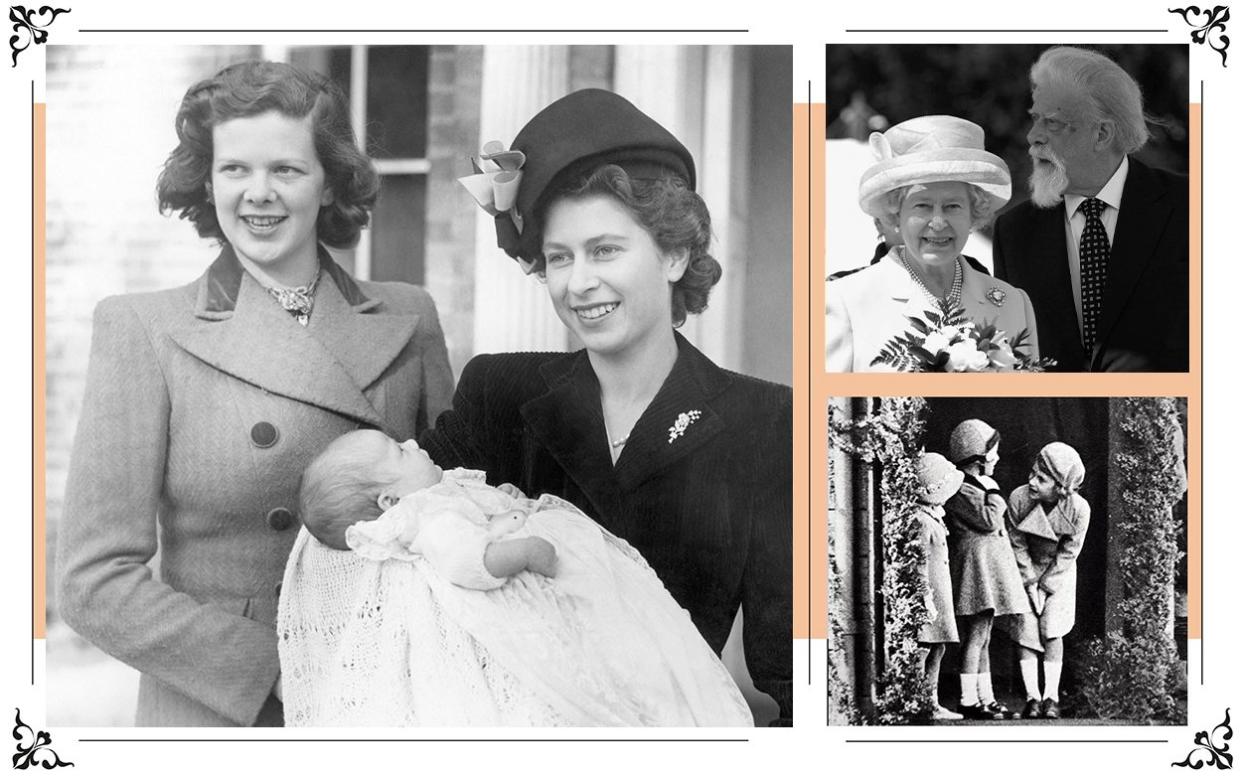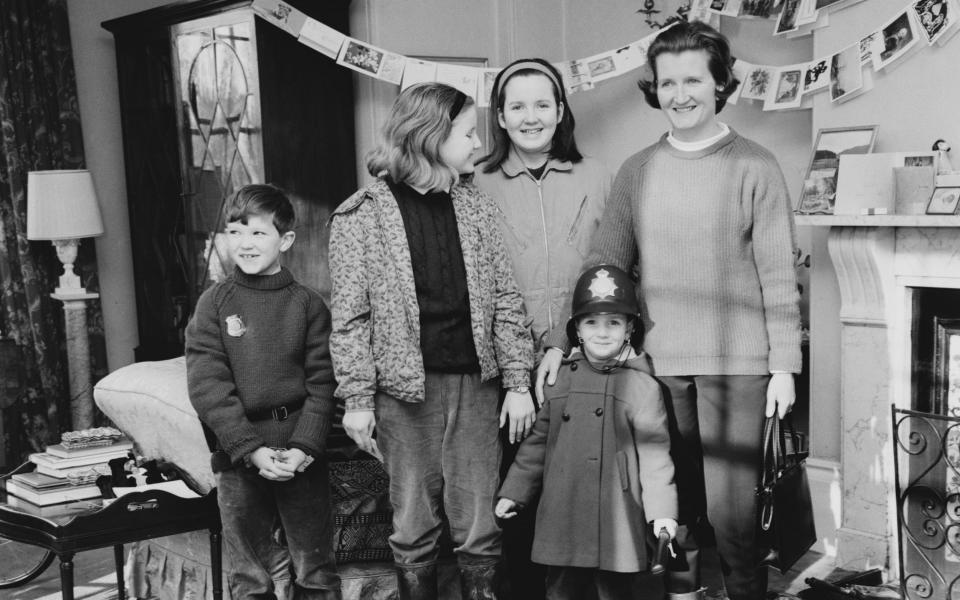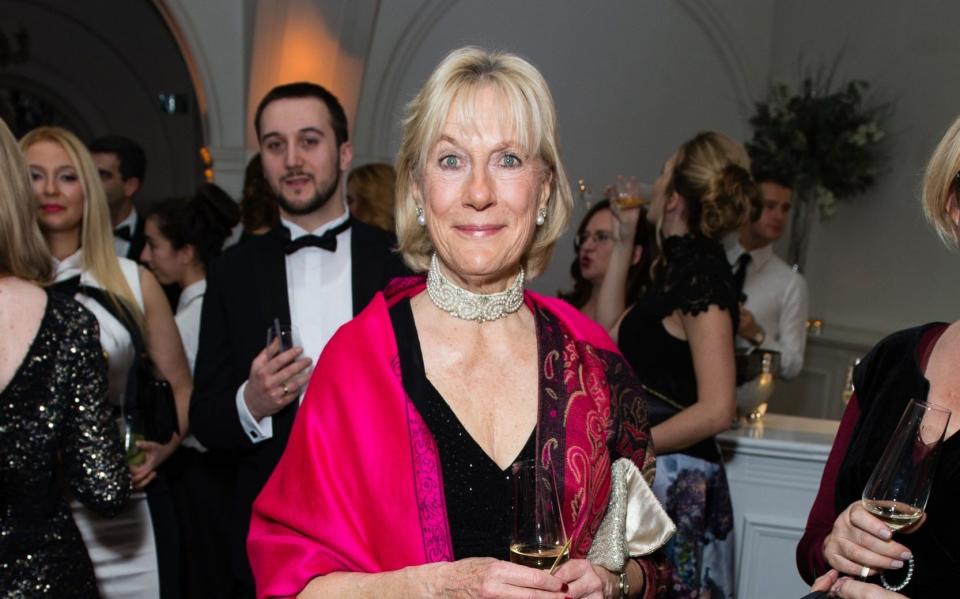Keeping it in the family – why the Queen’s cousins were always her best friends

- Oops!Something went wrong.Please try again later.
- Oops!Something went wrong.Please try again later.
- Oops!Something went wrong.Please try again later.
- Oops!Something went wrong.Please try again later.
Newspapers labelled it her first official public appearance’ It was October 24 1931 and, at the tiny village church of St Mary, Balcombe, five-year-old Princess Elizabeth of York, afterwards Elizabeth II, was one of 12 bridesmaids at the wedding of Lady May Cambridge, her second cousin.
Our future Queen was described then as standing “on a pew, chatting to the other three juvenile bridesmaids”, among whom was another second cousin, Lady Mary Cambridge. Older bridesmaids included Princess Ingrid of Sweden and Princess Sybilla of Saxe-Coburg-Gotha. Both were also Elizabeth’s cousins, great-granddaughters of Elizabeth’s great-great-grandmother Queen Victoria. Ingrid was also a granddaughter of Elizabeth’s elderly godfather, her great-great-uncle, the Duke of Connaught.
Family, especially her extended cousinhood, has always played an important role in the Queen’s life so it was only a matter of time before TV producers identified in this extended clan for frothy entertainment. The Queen’s father had four siblings who survived to adulthood, her mother eight: so from birth the Queen was richly endowed with first cousins. Then there were second and third cousins, like Princesses Ingrid and Sybilla, on her father’s side offspring of a ‘Royal mob’ that extended across continental Europe from Russia and Romania in the east to Spain in the west, from the northern monarchies of Norway and Sweden to Greece’s imported German-Danish dynasty in the south, on her mother’s side a tight-knit web of Scottish aristocrats.
As a small child, the Queen’s social life was dominated by these extended family members. Absent on tour in Australia, her parents missed her first birthday. Instead baby Princess Elizabeth celebrated with a carriage ride with her cousins George and Gerald Lascelles, the sons of her father’s sister, Mary, Princess Royal, and eight-year-old Alexander Ramsay, Elizabeth’s third cousin once removed, who inspired the naming of her first canary, Sandy. Family-only events and decidedly grown up, her birthday parties as a little girl were hosted at Windsor Castle by her grandparents, King George V and Queen Mary. Their guest list was dominated by royal uncles and aunts, the princess’s pink-iced birthday cake, made by the King’s chef, a sole concession to childishness. The only guests of Princess Elizabeth’s own age were her cousins, the Lascelles boys, afterwards a director of the Royal Opera House and president of the British Racing Drivers’ Club. Since both boys struggled to relax in the presence of their irascible royal grandfather, the gusto they brought to party games was almost certainly constrained.

ITV’s The Queen and Her Cousins, screened next Thursday, trains the spotlight on a handful of Royal and non-Royal relatives, including Victoria Pryer, the daughter of a Scottish cousin, Margaret Rhodes, Princess Olga Romanoff, whose mother fancied her as a bride for Prince Charles, and Lord Ivar Mountbatten. With a keen ear for a soundbite – forthright Princess Olga describes Queen Mary as suffering from a ‘kind of upmarket kleptomania’ – its focuses are greater or lesser degrees of eccentricity and diversity: Lord Ivar Mountbatten’s second spouse is an airline cabin services director called James Coyle, while Victoria Pryer runs a delicatessen in north Norfolk. Not all necessarily spend a great deal of time with Her Majesty.
Less to the fore is any examination of why, in some instances, her cousins have remained at the heart of the Queen’s circle. A secretary of the late Earl Mountbatten of Burma – himself a cousin through Queen Victoria’s second daughter, Princess Alice – suggested that the Queen finds it “very difficult to relax unless she is surrounded by those with whom she feels at home”.
Here, then, is the real key to the Queen’s closeness to her favourite cousins: blood ties offer the surest guarantee of trust in a life in which little is private. In an extraordinary existence, shared experience also offers understanding; for the Queen, the company of family members holds out the possibility of unwinding and being off duty. Family members come closest to treating the Queen with any degree of normality.
Composer Benjamin Britten was one of many royal guests who lamented his own and other people’s inability to act and speak naturally in the Queen’s company, describing conversation at gatherings at Sandringham as potentially ‘dire… with everybody keeping their mouths shut for fear of saying something that might give offence, or prove controversial’.

High on the list of those with whom the monarch feels at home are family members. With her only sibling Princess Margaret, her relationship, although not always easy, was pivotal. As an adult the Queen continued to share family celebrations and wedding anniversaries with the royal uncles and aunts who she spent time with as child, spending one wedding anniversary, for example, at the Northamptonshire home of her father’s younger brother, Henry, Duke of Gloucester.
The importance of these relations was ingrained in Elizabeth’s psyche from infancy, one of the lessons she learned from her formidable grandmother, Queen Mary, whose view of royalty and its uniqueness verged on the hieratic. The Queen’s mother reinforced this view. ‘I have always been a “family” person,’ the late Queen Elizabeth the Queen Mother wrote to her elder daughter. In practice this meant a preference for the company of her own relations over almost anyone else. For ten decades, the Queen has spent part of every summer at Balmoral in the Highlands. As a child, her playmates were those invited by her mother, most of them members of the Queen Mother’s family: Margaret and Jean Elphinstone, daughters of the Queen Mother’s eldest sister, Mary; Diana Bowes-Lyon, one of her brother Jock’s daughters; the two children of her nearest sister, Rose. All were cousins of the future Queen’s.
Annual visits to her maternal grandparents at Glamis Castle reinforced the Queen’s sense of herself as part of a large and loving family. Her Scottish playdates included the birthday party of a fellow great-grandchild of Edward VII, her second cousin, James, Master of Carnegie. Perhaps these weren’t the kind of parties most children remember - Elizabeth was invited to plant a tree at one cousin’s birthday party, watched by a photographer from the Dundee Courier - but mostly they offered fleeting and welcomed escape from the public attention that has been an aspect of the Queen’s life from birth.
The Queen’s attachment to and affection for her nearest cousins has been clear throughout her reign. She has consistently resisted calls to streamline the extended royal family and has rebuffed suggestions that Royal Highness status - and the privileges associated with it - be confined to more immediate family members. The list of those interred in the royal burial grounds at Frogmore since the Queen’s accession is a lengthy one that testifies to her sense of an extended royal family. Keeping it in the family has been not least among the Queen’s maxims. On 9 July 1947, her parents announced her engagement. Her fiance was Lieutenant Philip Mountbatten, RN, the former Prince Philip of Greece and Denmark. Queen Mary set about unravelling their relationship: third cousins through Queen Victoria, fourth cousins once removed through collateral descendants of George III, second cousins once removed through Christian IX of Denmark.
Matthew Dennison’s biography of the Queen will be published on June 3.
The Queen’s most outrageous cousin
By Eleanor Steafel

She once received a sharp kick in the ankle from her teenage cousin Princess Anne when they were both vying for the affections of a dashing Scottish officer at a Highland Ball.
As a “virginal” 17-year-old, she was briefly touted as a possible wife for another cousin, Prince Charles, whom, she later said, “should have had the courage to marry Camilla in the first place”.
And if she were to cast her young self as a character in Downton Abbey, Princess Olga Romanoff reckons she’d have been Lady Sybil, the rebel aristocrat who ran off with the chauffeur. “We didn’t have a chauffeur, but I was just as bad.”
It’s fair to say, then, that despite being related to both the Queen and Prince Philip (“via the Danes,” she reveals in ITV’s The Queen and her Cousins with Alexander Armstrong), Princess Olga Romanoff is relatively lacking in the pomp and circumstance that befits her Royal connections.
Indeed, in the programme, which shows her at home at Provender, the 13th century house she inherited and now runs as a holiday let with her daughter, Alexandra, she seems to possess few airs and graces (despite once appearing on Australian reality TV in 2005, doling out etiquette advice to wannabe Royals). She swears rather brilliantly, and insists on being addressed as Olga because “no one gives a stuff about titles any more”.
If it weren’t for the portraits of Russian royalty on the walls, it might be easy to forget she is a cousin of our Queen, and the only daughter of Tsar Nicholas II’s eldest nephew, Prince Andrei Alexandrovich, who escaped imprisonment in the Crimea by the Bolsheviks on a British naval frigate, and therefore the subsequent executions.
Growing up in Kent with “nannies and donkeys and ponies”, Olga’s early encounters with our own Royal Family were not especially successful. When she was a girl, the Queen took her children to have tea with her grandmother, Grand Duchess Xenia Alexandrovna. “They apparently had beautiful manners and I had terrible manners,” says Olga, who takes a dim view of younger members of the Royal Family talking about “their problems” on television, and describes Queen Mary, the wife of George V, as suffering from “a kind of upmarket kleptomania”.
Growing up a princess “didn’t actually have any impact on me at all”, she says in the programme, adding she feels “blessed” to have avoided too much pageantry in her life, in spite of the title. “I would have made a lousy imperial princess,” she admits, sporting the sensible country trifecta: gilet, jeans and boots.
“I scrub up well but you don’t want to have to scrub up every day; you want to be smelling of horse,” she adds.
It’s possible, then, that she shares rather more in common with her cousin the Queen than she might confess to. Though it's hard to imagine Her Majesty requesting that the heat be turned up in her Land Rover because her "a-- is blue".
The Queen and her Cousins with Alexander Armstrong is on ITV on Thursday April 15 at 9pm.

